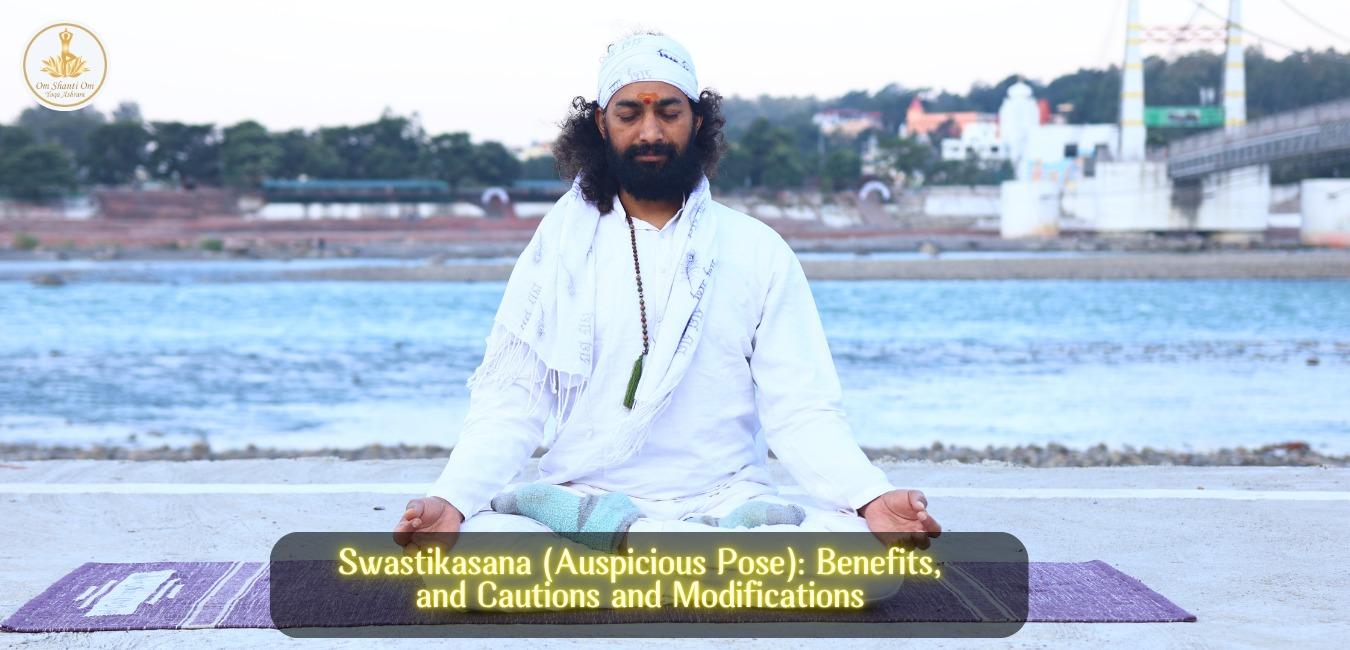Swastikasana Benefits: A Deep Dive Into This Ancient Meditative Posture

Yoga, an ancient practice rooted in Indian tradition, offers a variety of poses that contribute to overall physical, mental, and spiritual well-being. Among the many asanas (poses) used in meditation and pranayama (breath control), Swastikasana holds a special place. Though it is often overlooked in favor of more complex or dynamic poses, Swastikasana is a powerful seated posture that offers numerous subtle yet profound benefits. In this article, we will explore in detail the Swastikasana benefits, how to perform it correctly, and how it can enhance your daily yoga or meditation practice.
What Is Swastikasana?
Swastikasana is a meditative sitting posture used primarily for meditation and pranayama practices. The word "Swastika" comes from Sanskrit, meaning "auspicious" or "well-being." In this posture, the feet are placed in such a way that they form a symmetrical, interlocked position, which represents stability, balance, and peace.
It is considered a basic pose, ideal for beginners as well as advanced practitioners who wish to cultivate a still mind and a steady body during extended periods of seated meditation.
How to Perform Swastikasana
Here is a step-by-step guide to correctly practice Swastikasana:
-
Sit on the floor with your legs stretched forward.
-
Bend your left leg, placing the sole of the left foot against the inner side of the right thigh.
-
Bend your right leg and place the right foot between the left calf and thigh.
-
Tuck both feet and adjust so that the legs are comfortably interlocked.
-
Rest your hands on your knees in a mudra (e.g., Chin Mudra or Jnana Mudra).
-
Keep your spine straight, shoulders relaxed, and head aligned with the spine.
-
Close your eyes and breathe naturally.
Swastikasana Benefits: Why You Should Practice This Pose
When practiced regularly, Swastikasana can bring a wide array of physical, mental, and spiritual advantages. Let’s break down the Swastikasana benefits in detail:
1. Promotes Mental Calmness and Focus
Swastikasana is designed to calm the nervous system. The symmetrical placement of the legs and stable base help the body become motionless, allowing the mind to turn inward. This makes it an ideal pose for meditation, leading to improved focus, reduced stress, and greater mental clarity.
2. Ideal for Meditation and Pranayama
Because it keeps the spine upright and the body relaxed, Swastikasana is highly recommended for meditation and breathing exercises. A steady posture minimizes physical distractions, enabling deeper states of concentration and inner awareness.
3. Improves Posture and Spinal Alignment
Regular practice of Swastikasana strengthens the muscles supporting the spine and helps in maintaining a healthy posture. Over time, this reduces the risk of back pain and postural imbalances, especially important for those who sit for long hours.
4. Enhances Flexibility in the Lower Body
The interlocking position of the legs gently stretches the hips, knees, and ankles. Although subtle, this movement enhances lower body flexibility over time, especially when combined with other yoga asanas.
5. Stimulates Energy Flow
According to yogic principles, Swastikasana aligns the body in a way that allows the life force energy (prana) to flow more freely through the energy channels (nadis). This facilitates a better energetic balance in the body, supporting emotional stability and spiritual growth.
6. Reduces Anxiety and Nervous Tension
One of the most valuable Swastikasana benefits is its ability to soothe the nervous system. It helps activate the parasympathetic nervous response, reducing anxiety, promoting deep relaxation, and improving sleep quality.
7. Suitable for All Ages
Unlike some complex yoga poses, Swastikasana is accessible to people of most age groups and fitness levels. Whether you are a beginner or a seasoned yogi, this posture offers a safe and effective way to ground yourself and deepen your inner practice.
Swastikasana vs Other Meditative Poses
There are several seated postures used in yoga, such as Padmasana (Lotus Pose), Sukhasana (Easy Pose), and Siddhasana. However, Swastikasana offers a unique balance between comfort and stability. It is less strenuous than Padmasana and provides more structural support than Sukhasana, making it an excellent choice for long meditation sessions.
Precautions and Contraindications
While Swastikasana is generally safe, a few precautions are necessary:
-
Avoid this posture if you have knee, ankle, or hip injuries.
-
Use a cushion or folded blanket if sitting directly on the floor causes discomfort.
-
Don’t force your legs into position—ease into the pose gradually, especially if you're new to yoga.
-
If you have chronic back pain or spinal disorders, consult a yoga therapist or healthcare provider before practicing.
Tips for Beginners
-
Practice hip-opening stretches like Baddha Konasana (Butterfly Pose) and Ananda Balasana (Happy Baby Pose) to increase flexibility.
-
Use yoga blocks under the knees for support.
-
Start with shorter sessions (5–10 minutes) and gradually increase the duration as comfort improves.
-
Combine Swastikasana with mindful breathing to enhance its calming effects.
Conclusion
Swastikasana may appear simple at first glance, but its depth and effectiveness as a meditative posture are profound. It’s more than just a way to sit—it's a gateway to inner stillness and clarity. By incorporating this pose into your daily yoga routine, you can experience a wide range of Swastikasana benefits, from improved posture and flexibility to deeper mental calm and emotional resilience.








